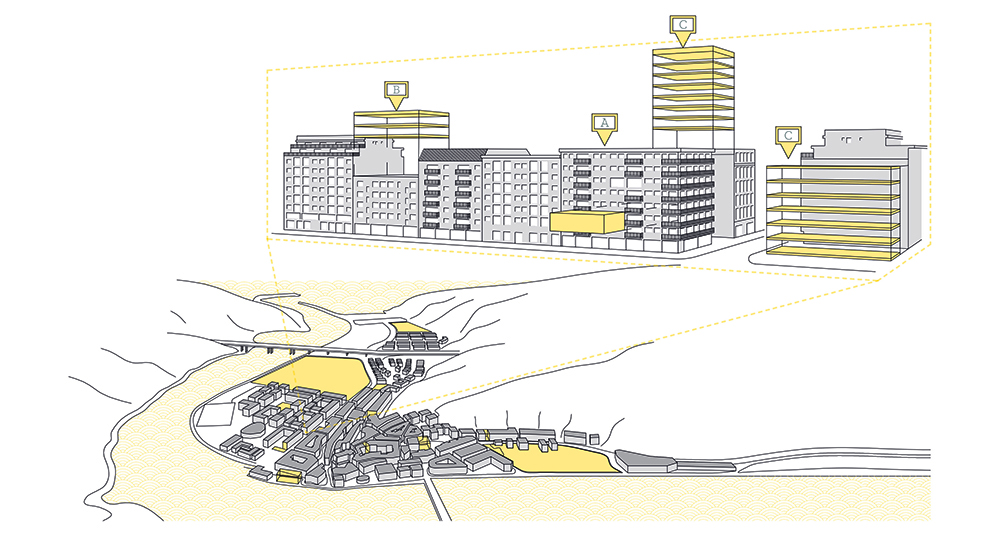In cities around the world, public housing has become a pressing need in response to a strong demand arising from complex human processes. This need is also an opportunity for urban improvement. One-way of explaining the urban dimension of the ATRI strategy is to compare it to dentistry: The quality of life of a society is accurately reflected in the dental health of its inhabitants. Dental health depends on several factors, but ultimately, the population requires access to professional care. Dentists can use aggressive means such as extraction and prostheses, which ultimately weaken the whole. But knowledgeable and careful dentists work with more affection: thorough cleaning, sealing cavities, capping, implanting. They save the tooth and thus preserve the health of the teeth and the identity of the patient's mouth. Something similar happens in the city. Good urban planners work with the existing physical and social fabric. Clumsy ones approach the city like a tabula rasa and build great polygons of enameled ceramic, hard, perfect and distant, alien to the city and its own neighbors.

A morphological approach to this idea of urban dentistry allows us to classify the opportunities for urban improvement in three large groups, based on the relationship of the new interventions with the existing city fabric.
A) Insertions: rehabilitate, change of use, improve existing housing and introduce new housing in buildings the functions of which have become obsolete. Fill.
B) Superpositions: overcome, optimize the existing buildability and enhance underdeveloped sectors. To superpose.
C) Juxtapositions: adhere to the consolidated party walls that are the result of urban divides and prevent blind front buildings that produce repetitive public spaces of low quality. To attach, connect.


